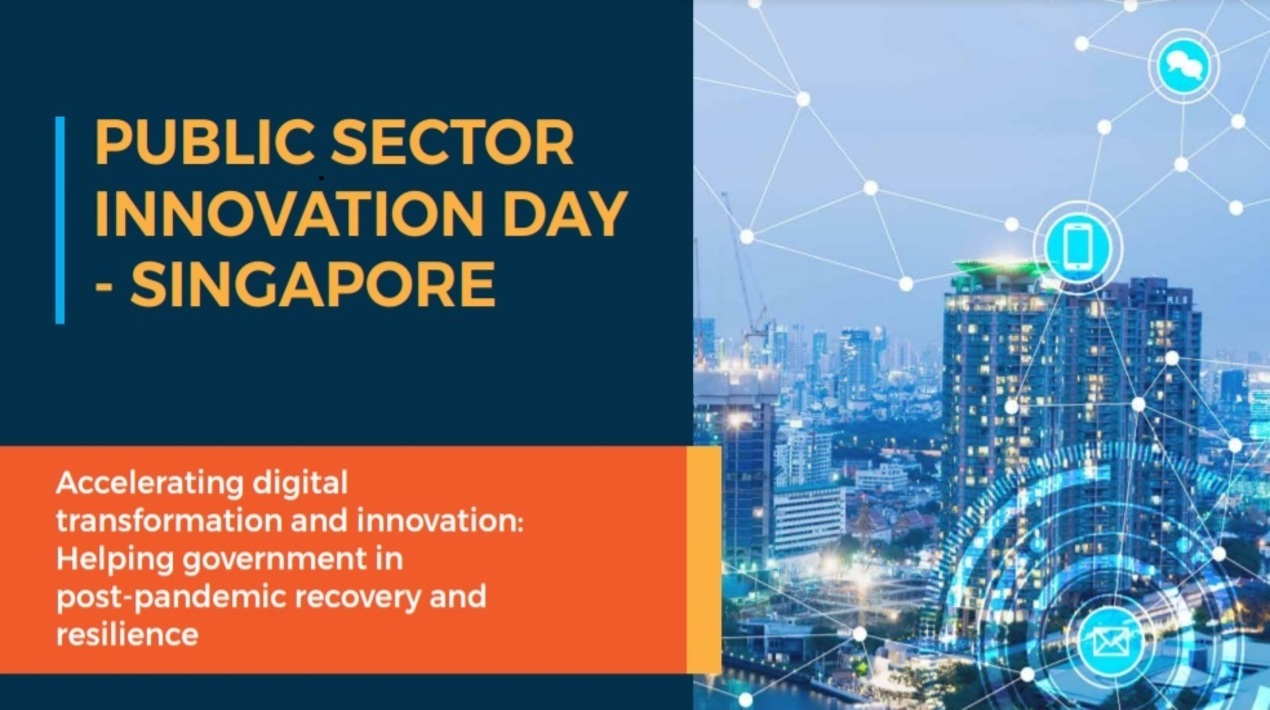
This is Part 1 of a two-part series covering the Public Sector Innovation Day – Singapore. Read Part 2 here.
The COVID-19 pandemic has brought about significant changes in the world. It has ushered in a new normal, bringing a different era of governance and business operations. Technology is at the fore of this front, helping adapt to these disruptive changes in an unprecedented manner. The scale of this transformation is incredible – experts say CVOID-19 has driven two years of digital transformation in two months.
The public sector is at the heart of the response to COVID-19. The response has required action on multiple fronts, using technology advancements, not just for health measures, but to aid efforts to mitigate the economic effects on households, firms, and industries. The crisis has drawn attention to the tools and technologies that governments need to have to protect their citizens and enterprises as agencies struggle to minimise associated negative impact, deliver public services, and ensure the continued development of critical national infrastructure.
A digitally enabled government must go beyond merely digitising processes and offering services online. It must also find innovative ways to raise productivity in workplaces and bring convenience and efficient services to citizens. As the world prepares for the new normal and all the economic, social, and political question marks that accompany it, many are looking to the tools of data science to continue to inform this trajectory. Advanced data science, and the technology it powers, is rapidly becoming an essential component of nearly every industry.
The Singapore government, too, is looking to ramp up the adoption of digital technologies and the nation to recover from the COVID-19 pandemic. Simultaneously national tech agencies developing new digital tools and services to support citizens and businesses. This requires a comprehensive approach including the ability to rapidly integrate new data, make accurate, multilevel forecasts and provide data-driven insights for policymakers.
Now, even as the journey to a post-COVID-19 recovery has begun, the question is still relevant: does the public sector has the necessary tools and technologies to respond effectively, recover quickly, rebound efficiently and reimagine the future which is critical to national interests?
OpenGov Asia held a Public Sector Innovation Day 1 for Singapore at Intercontinental Singapore. The session aimed to impart knowledge on how public sector agencies can accelerate digital transformation and innovation to emerge stronger post-COVID-19.
Attended by key policymakers from the public sector and technology industry experts, the session served as a great peer-to-peer learning platform to gain insights and practical solutions to understand the value of cutting-edge technologies available to make better, faster, and more cost-effective, data-driven decisions that make a difference in the lives of the citizens post-pandemic.
How COVID-19 Accelerated Public Sector’s Digital Transformation
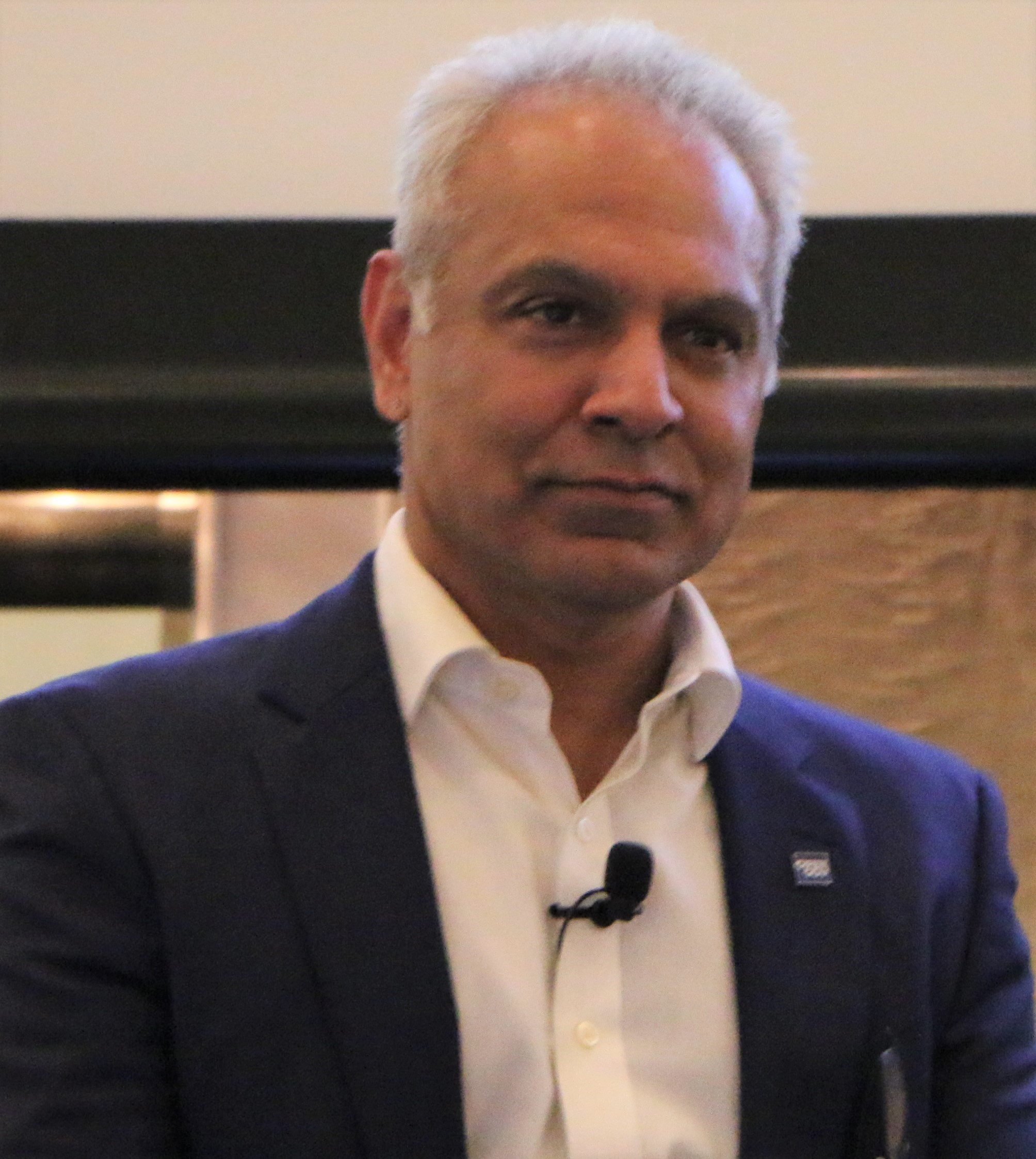
To kickstart the session, Mohit Sagar, Group Managing Director and Editor-in-Chief at OpenGov Asia delivered opening remarks.
As early as 2019, there was consensus on the benefits of remote working, but it did not happen in any significant way. Then, at the end of 2019 came a crisis so debilitating that it brought the world to a halt almost overnight and it kept going relentlessly. But not all were equipped to do so and many just emulated what the other countries were doing. None the less, public services globally have been significantly boosted.
Countries from all over the world were looking to adapt to the challenge. Citizens needed access to government services more intensely and urgently. New information and data were being generated incessantly, necessitating new plans and decisions.
In the early stages, people were excited at the opportunity to work from home. Interestingly though, the step was considered a “pivot” – with the connotation of reaction rather than strategic. People and organisations were said to be “pivoting” to manage and mitigate the issues the pandemic brought like making people work from anywhere, anytime.
Beyond a doubt, the public sector did its job in terms of providing relevant services and initiatives throughout the age of COVID-19. But the question remains, were those initiatives innovative and intentional and sustainable? Were they just a good-to-have or a must-have?
The good brings with it the bad, the unsafe and the difficult. As the initial euphoria of remote working wears thin, people, once happy about the shift, realise that the new normal disrupts their work-life balance and their well-being. Other measures are facing the same reaction. Lacking data, this so-called digital transformation is rapidly losing its sheen and is being considered a band-aid solution.
With COVID-19 seemingly waning and the economy starting to open, governments are looking for ways to boost their economy. In this sea of change and disruption, often reverting to the known is comforting. Knowing this penchant, Mohit asked the delegates, “Do we want to go back to the old norm because it was beneficial at that time? Or should we welcome the wider adoption of technologies that helped us adjust to the new norm?”
Mohit reminded the delegates that by staying true to the lessons learned from COVID-19 and by increasing the usage of technologies like AI, Cloud and Data Analytics, agencies can move further along on their digital transformation journey.
Governments must find the right balance in their digital transformation journey between technology, people and processes. They must also find leadership and the will to empower the workforce with the right tools to achieve the ultimate end goal of a complete digital transformation in the new normal.
In closing, Mohit emphasised the need for agencies to find a suitable partner in this digital journey. They must find the right people who do what they do best for them to stay on the right path towards a full digital transformation.
Strategies to Enable Health Data Optimisation and Usage in Singapore
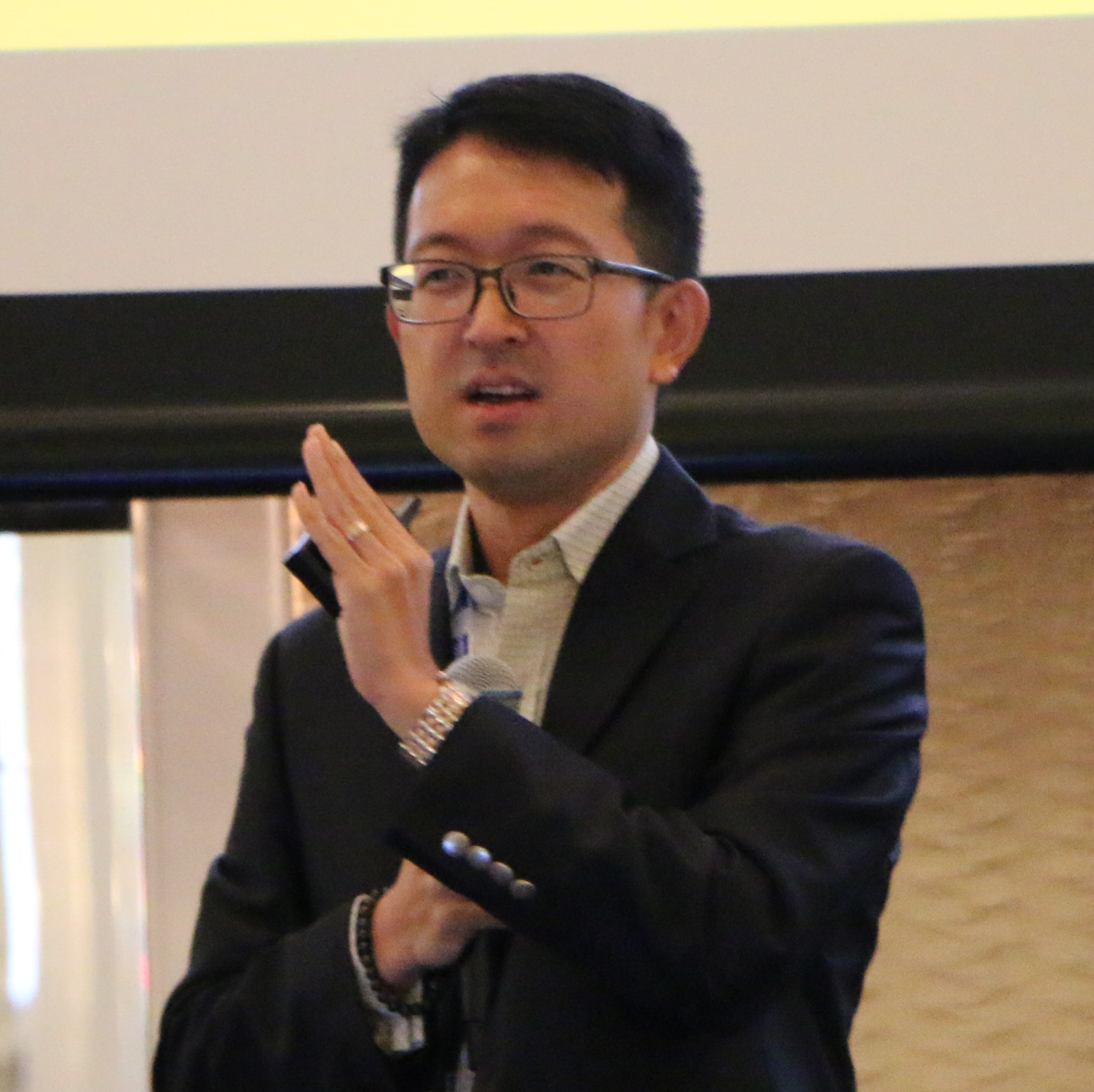
After the opening remarks, the forum heard a keynote address by Sutowo Wong, Director, Analytics & Information Management Division, Singapore Ministry of Health. He discussed various strategies to enable health data optimisation and its usage. Sutowo started by giving an operating context concerning the data processes in the Ministry of Health, especially during the pandemic.
First, as governments and agencies shape their data strategy, they need to be mindful of external macro trends such as the democratisation of data and analytics, where self-service analytics and the rising demand for data visualisation requires a better user experience for both data and insights.
Second is the rise of analytics apps where role-based actionable insights are more easily consumed and deployed and the adoption of improved decision-making procedures. Leaders must have the ability to support decision making by realising the value from investments in analytics.
He strongly believes that user experience matters. An effective data integration strategy must cater to the user’s expectations and needs by making sure that services are efficient, usable, interactive and can deliver on their promise. Adopters must learn that a data lifecycle has four stages: acquisition, management, access and distribution and exploitation. However, adopters are troubled by several key pain points.
Data acquisition is burdened with issues like significant lead time and cost required to collect data from source systems, leading to delays and high cost, multiple duplicative requests from different divisions/entities to collect same/similar data.
Data management is hindered by data duplication across different repositories, no comprehensive data catalogue and lack of standard data definitions, a large amount of data cleansing and analysis done manually using excel, and by having no data quality monitoring and remediation processes in place.
Access and distribution are bothered by issues such as different entities and systems having their de-identification and anonymisation processes, tedious and varied processes to seek data access approval for different datasets, and fear of residual liabilities for data provider when data is shared.
Lastly, exploitation of data faces challenges such as organisations having limited processing scalability, the governance of data scattered across many endpoints are demanding, the lack of model development and deployment processes for operationalisation of POCs, and the lack of reusable analytics assets e.g., codes, datasets.
The Ministry of Health addressing these issues and improving its capabilities, policies, and legislation. The MOH Consolidated Data Repository (MCDR) allows MOH and authorised users to gain access to cleaned and concorded healthcare data to reduce the time and resources expended by consolidating and optimising the data from different sources to the MOH central platform.
A Data Management Workstream (DMW) standardises and automates data extraction, fusion, and pre-processing as well as utilises a team of data concierges to develop data catalogues and coordinate data requests to allow collected data to be cleaned once for multiple uses in the future. By pre-linking a wide range of datasets, the turnaround and readiness of providing data will improve significantly over ad-hoc and piecemeal efforts.
Data Governance works with the Personal Data Protection Commission (PDPC) to clarify data accountabilities as data flows between MOH and Public Healthcare Institutions (PHIs) to centrally drive data governance and facilities for anonymised and identifiable data to improve data accessibility and distribution across the board.
Sutowo added that users are looking for actionable insights, which is why the MOH must be flexible enough to meet these differing needs. The ministry is making sure that data is curated, and a catalogue is being created to improve data discoverability. Requests for data and packages are to be addressed by using a standardised and streamlined process, providing access to the required tools in a sandbox to analyse the data, and deploying the output and monitoring the performance in operations continuously.
Sutowo touched on MOH programmes that utilise data analytics. The Nationwide Predictive Model for Admission Prevention – Hospital to Home (H2H), provides holistic care for patients who are at home via the common care model for Transitional Care. The predictive model was launched in all public hospitals in Singapore in April 2017. As of 6 May 2018, more than 15,000 patients have been enrolled on the H2H programme.
The ministry launched a self-learning retinal screening tech that cuts the time needed to spot signs of diabetic eye disease as well as an automated tool to diagnose uncertain cases of appendicitis to guide the optimal use of CT scans.
Sutowo emphasised that beyond data, the rapid growth in digital health presents opportunities to redefine our care and financing models. The Global and APAC digital health market has been growing rapidly and is poised for further growth. Singapore is home to 170 local start-ups, between 20 to 30 foreign start-ups and 40 multinational companies in the digital health space.
In closing, he noted that the nation’s public healthcare IT ecosystem has undergone significant shifts and will continue to transform for the better.
Fireside chat: How can the public sector leverage data revolution to respond, recover and reimagine next-gen citizen-centric services?
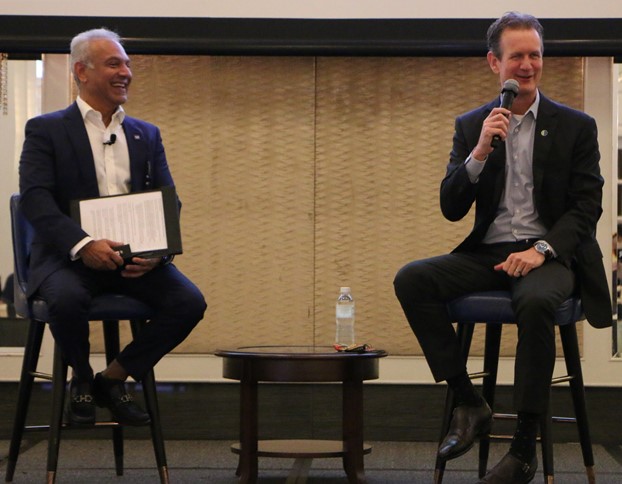
The session moved to a fireside chat segment where Mohit and Remco den Heijer Vice President – ASEAN SAS discussed how the public sector can leverage data revolution to respond, recover and reimagine next-gen citizen-centric services.
On being asked why he sees data as the heart of the COVID-19 recovery, Remco explained that data is the perfect element in terms of recovering from the pandemic because it is everywhere, both in the private and public sectors.
The world should embrace technologies that are scaling and continuously evolving. Disruptive technologies can extract actionable insights from this data, which is why both sectors must use this development and advantage to recover from the pandemic. Software, hardware, and related skills must be enhanced to leverage technology and data for recovery purposes.
Remco touched on the topic of AI being used by governments in their processes. AI adopters, he advises, must continuously update their AI models with new and updated data to strengthen their predictive capabilities that will provide possible solutions for present endeavours.
He is convinced that that AI functions at its finest when it is incorporated with human intelligence. Having that human lens on top of the tech will always be an important aspect.
Remco urged delegates to continue doubling down on networks and partnerships and to continue learning from each other in this journey.
Applying real-world AI & Analytics to Improve Decision-Making and Provide Efficient Citizen Services in the New Normal
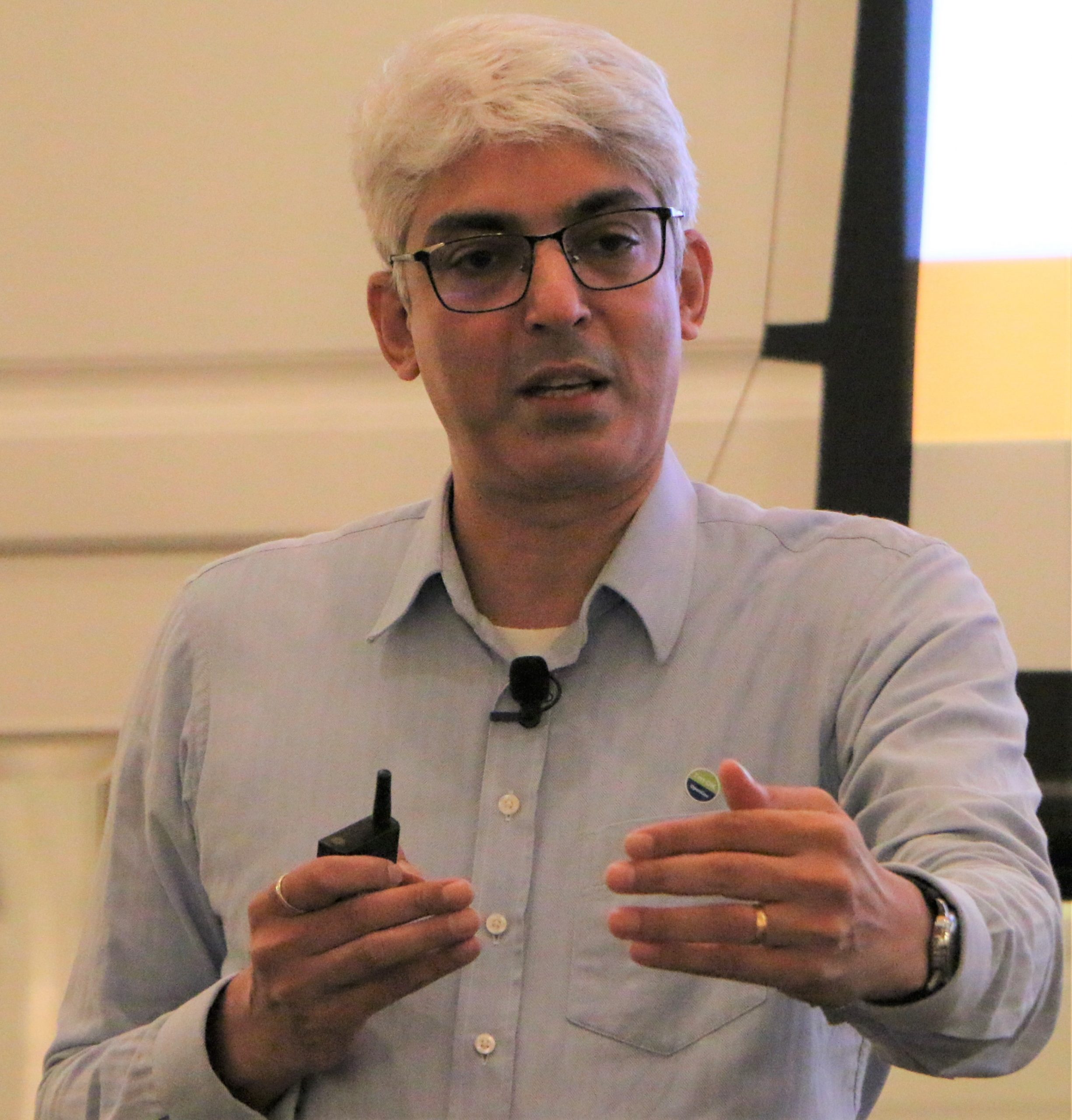
Following the fireside chat, the session heard from Deepak Ramanathan, Vice President – Global Customer Advisory SAS on how AI and analytics in the new norm have improved citizen services and transformed decision–making.
There are several reasons as to why leaders should take a new approach when it comes to decision-making, Deepak says. A new approach may result in a significant need to make better use of resources, improve the efficacy and efficiency of decision making and result in the right service delivery in a timely fashion, drive revenue, control costs and reduce risks. Any new approach should promote the idea of automating data acquisition and using analytics/AI that will drive these desired and needed efficiencies. All in all, decision making will increasingly get digitised.
Deepak cited several examples of augmenting decisions that drive digital transformation and deliver value. One of which was advanced mental health care with the predictive analysis used in California, USA. The project required the integration of data across country departments and information systems. It is focused on building a unified view of every client resulting in improved and effective services.
The Los Angeles country utilised a cross-agency service to measure the cost and benefits of serving the indigent adults in the country’s General Relief Programme.
In Amsterdam, the health sector used computer vision and predictive analytics to better identify cancer patients who are candidates for life-saving surgeries.
Automating real-time, transactional decisions can help in the long run. It can be vital in improving safety and emergency response using sensors to predict disasters, early detection of insider threats for public safety and national security organisations, transforming predictive maintenance for complex equipment and infrastructure, protecting tax revenue, and streamlining expenditure.
Technological advancements will help boost employee satisfaction and drive revenue fields while protecting resources.
Deepak and his team at SAS recognise several principles for responsible AI. They believe that AI should have inclusive growth capabilities, sustainable development and well-being, human-centred values and fairness transparency, robustness, security, and safety, and accountability.
Accelerating Singapore’s Journey Towards Precision in Public Health
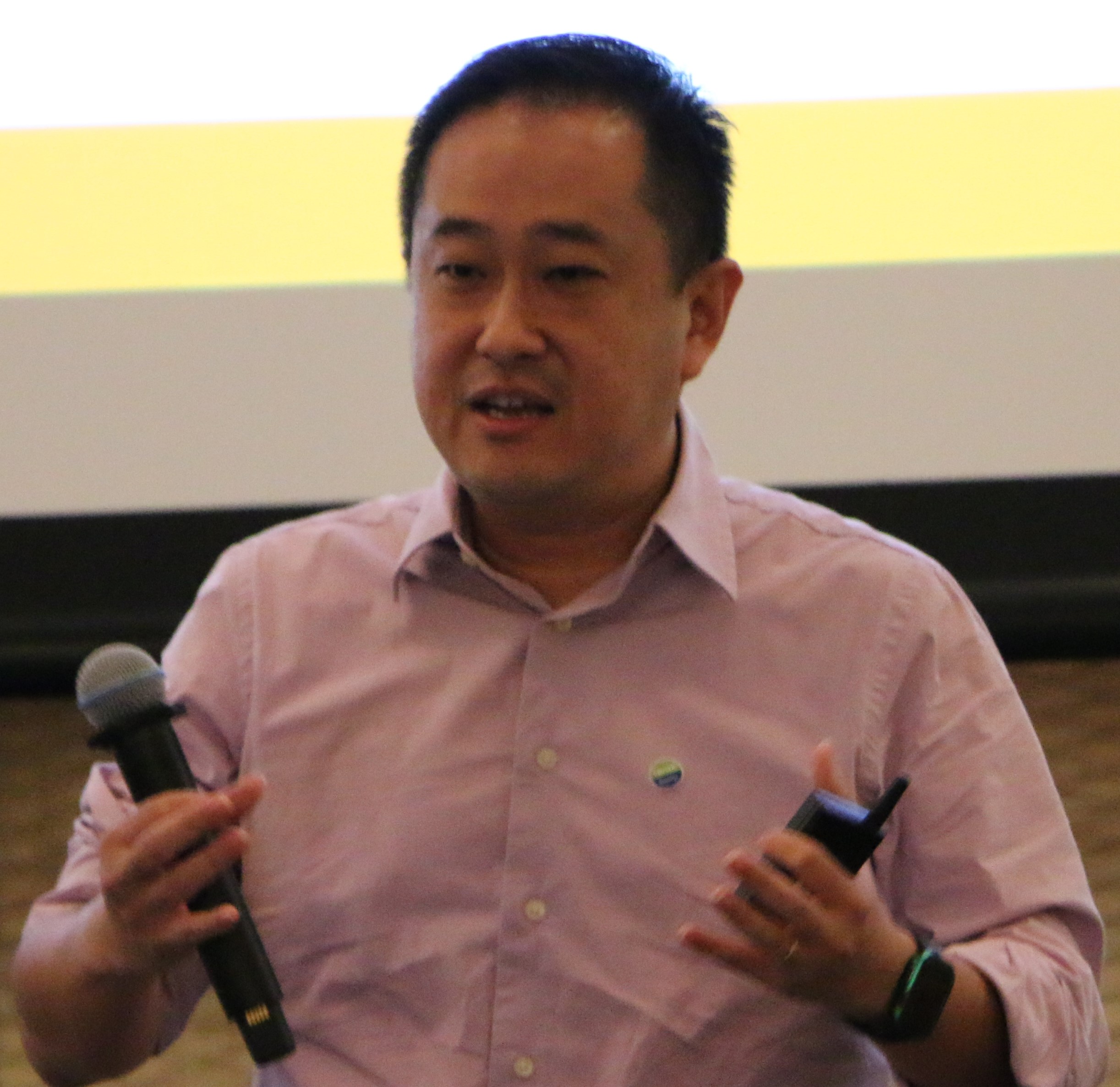
Taking over the session, Terence Ng, Director – Policy & Technology Innovation Office Health Promotion Board, Singapore shared how Singapore’s Health Promotion Board innovates in terms of the population’s health using partnership, research, and data.
Today, Terence believes, is an opportune time to reimagine and further invest in health and wellness promotion, as these are the hottest points of discussion during the age of COVID-19. There is a growing need for early detection and preventive health interventions. This is because of the continued growth in noncommunicable diseases (NCDs) particularly chronic conditions & associated health risks, a rise in medical costs. Singapore medical costs are twice the global average and 10 times the inflation rate – and the -19 pandemic is amplifying the urgency for health promotion and disease prevention.
COVID-19 has accelerated the development and adoption of digital health and tech. Organisations and institutions are looking at data and technology to improve health knowledge and delivery. The ubiquity of smart devices allows for more continuous and granular data and more individualised approaches, while AI and machine learning are adopted for predictive and personalised health analysis.
Precision in public health is about delivering the right intervention at the right time, every time, to the right population. The approach must be holistic, precise, personalised, multi-channel, and continuous.
The desired outcomes for precision in public health are as follows:
- Drive better health-related outcomes: reverse risk factors and slow down growth in NCDs / chronic disease and encourage sustained health behaviours and improve mgmt. & outcomes for patients (e.g., diabetes)
- Increase scalability & reach: scale and maximise the reach of interventions to more and different segments of Singapore pop. through better customisation, and leverage technology as an enabler to increase scalability
- Measure the impact of interventions: Better measure outcomes and effectiveness of interventions (incl. programmes, policies), constantly refine and improve approaches to health promotion based on evidence; use tech as an enabler to measure outcomes
- Improve cost-effectiveness of the system: enable more efficient and cost-effective healthcare system using technology and focus on preventive health
- Create new economic value & innovation: further, establish Singapore as a global & regional public health innovation hub and create training opportunities to develop up-skill home-grown talent
Partnerships, research, and data analytics are key in achieving precision in public health, Terence says. Better data and data banks enable researchers and the entire government to access world-class data, data integration and interoperable systems. This has accelerated the development of a Health Data Hub for the population. Better research will come from creating an ecosystem of research partners for next-gen discovery and innovations and better partnerships in public health interventions and major collaborations with leading technology firms and researchers.
Singapore’s Ministry of Health is transforming the healthcare system to adapt to the new normal. The ministry believes that their services should be beyond healthcare and should focus more on prevention and wellness. Services that go beyond a hospital, resulting in less hospital-centric, more relative shifts to right-sited care and beyond quality to value, and by providing more cost-effective treatments and interventions.
Governments Leading Through Change
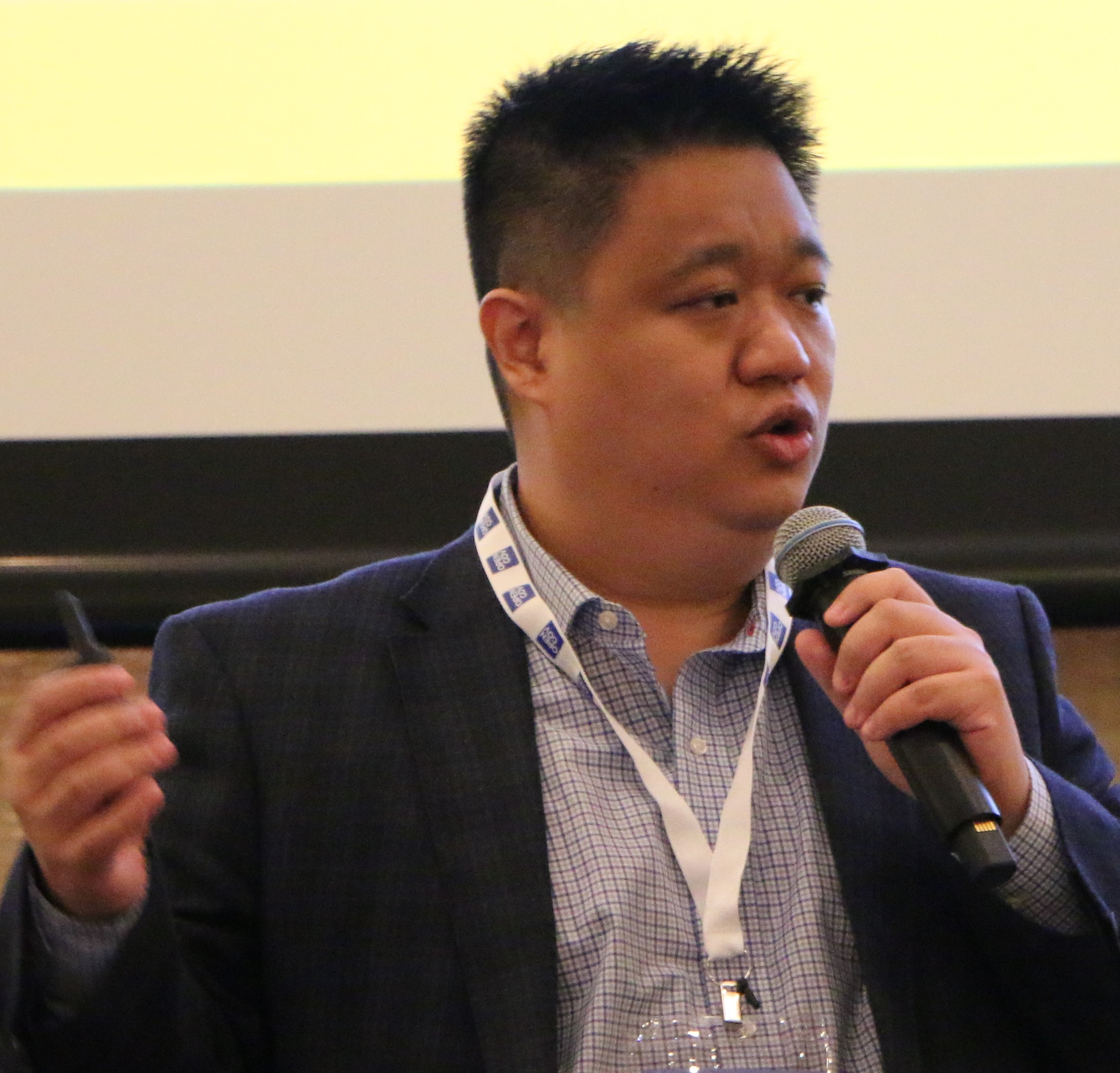
Jason Loh, Head of Analytics and Artificial Intelligence, Asia Pacific, Global Tech Practice SAS took over to talk on how analytics and AI machine learning helped organisations and government agencies face unprecedented challenges during the pandemic.
He acknowledged that COVID-19 changed working conditions and, essentially, life in general. In less than a year since the virus emerged and just over 6 months since tracking began, it upended day-to-day lives across the globe. The pandemic has changed how people work, learn, and interact as social distancing guidelines have led to a more virtual existence, both personally and professionally.
Machine learning is an innovative approach that has extensive applications in prediction. This technique was applied to help mitigate the effects of the pandemic and predict the risk in healthcare. Machine learning analyses the risk factors as age, social habits, location, and climate as well as identifying patients at high risk, mortality rates and other critical parameters and trend lines.
The technique can be used to understand the nature of the virus and further predict the upcoming issues. This learning algorithm creates inferences out of unlabelled input datasets, that can be applied to analyse the unlabelled data as an input resource for the pandemic. It provides accurate and useful features rather than a traditional explicitly calculation-based method.
Organisations and governments have gravitated toward predictive analytics in the last several years, as they use data to anticipate future trends and needs, especially during the onset of COVID-19. But forecasting demand is difficult even in normal times, and the pandemic’s unpredictability has been challenging. Since the pandemic started, simple descriptive analytics using good data about the present and recent past has helped the public sector.
Jason cited examples of how governments from all over the world utilised AI and data analytics to adapt to the new normal brought by the pandemic. The Chinese used machine learning for epidemiology tracking and neuro-linguistic programming for contact tracing.
Another example was the development of a COVID-19 e-health hub for health professionals in Australia. The e-health hub is dedicated online and by an over the phone mental health and wellbeing network. Developed rapidly to meet an immediate need, the initial release of the platform aims to deliver mental health assessment and access to resources and digital self-help and self-management in times of lockdowns caused by COVID-19.
Jason exhorted leaders to develop better citizen outreach programmes through AI in social media and chatbots. They need to develop platforms and tools that understand what the citizens need in each household. Using the information, they should incorporate it into an advanced data management system using AI and machine learning to help deliver services more efficiently.
Responsible and Ethical Use of AI in Public Sector: Application, Challenges, and Best Practices
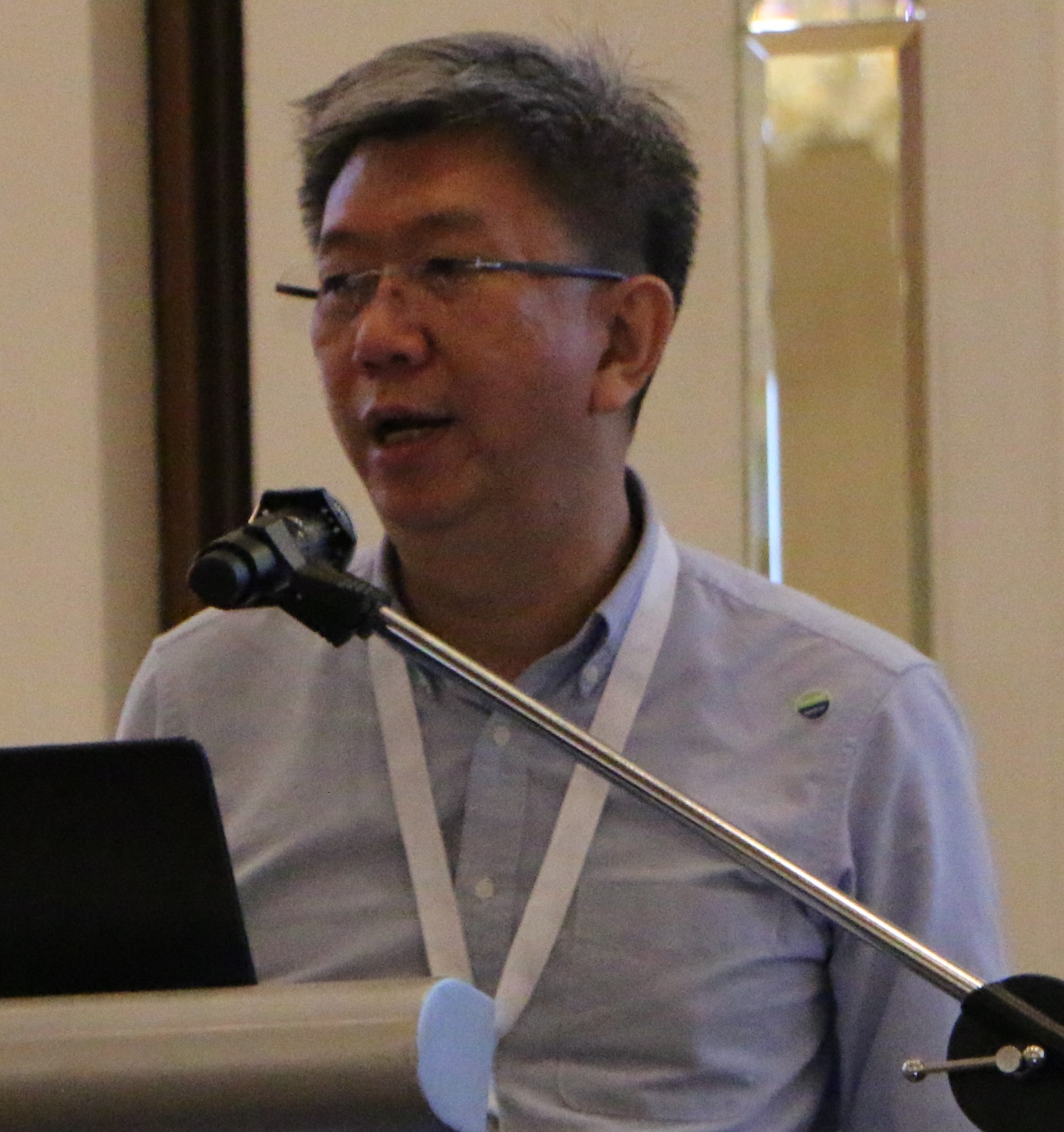
After Jason Loh’s presentation, the delegates heard a presentation from Lim Chinn Hwa, Senior Director Smart Nation Platform Solutions, Government Technology Agency, GovTech. He discussed how the public sector can apply responsible and ethical use of AI and the best ways to do so.
The public sector uses AI to make data-driven decisions, improve efficiency and productivity, bring convenience to citizens and personalise public services. That being the case, he notes, AI must be human-centric.
The National AI Strategy seeks to establish Singapore as a global hub for developing, test-bedding, deploying, and scaling AI solutions. The strategy is a key step in the country’s Smart Nation journey. It spells out the nation’s plans to deepen the use of AI technologies to transform its economy, going beyond just adopting technology to fundamentally rethinking business models and making deep changes to reap productivity gains and create new areas of growth.
The National AI ecosystem is made up of a triple partnership helix consisting of the government, the research community and industry. This supports whole-of-government applications with in-house capabilities in Machine Learning/Deep Learning, Natural Language Processing, Computer Vision, and IoT & Robotics. AI must be identified in national projects that deliver impactful social and economic benefits to citizens.
Moreover, Lim Chinn Hwa mentioned specific areas that greatly concern citizens. Areas like transport and logistics that can use AI for intelligent freight planning, smart cities and estates with seamless and efficient municipal services, healthcare facilities that can predict and manage chronic diseases, the education sector that AI can personalise through adaptive learning, assessment and safety and security that could use an AI tool for border clearance operations.
AI is vital to sustainability and food security and is fundamental to Singapore’s 30 by 30 vision to produce 30% of its nutritional needs locally and sustainably by 2030, including fruit and vegetables, fish and poultry.
One example is the challenge fish farms are facing. Fish larvae feed on large amounts of plankton called rotifers – every few hours. To ensure a constant healthy rotifer supply, samples need to be examined daily. A trained technician takes 40 minutes each day to manually examine samples under a microscope.
GovTech worked with the Singapore Food Agency (SFA) to develop an AI mobile app to automate the rotifer inspection process. Technicians upload photos of rotifer samples to a mobile app then the app automatically classifies healthy and unhealthy rotifers – reducing inspection time from 40 minutes to 1 minute.
Singapore is kept smoke-free by an AI-powered smoking activity detection unit. The tech has a deep learning pose estimation-based solution using security camera video feeds. It provides near real-time notifications to users on the detection of smoking activities. The cloud-based solution allows the exportation of data for trending analysis and optimises the deployment of National Environment Agency officers to targeted hotspots.
More recently, AI was also used in the country’s battle against COVID-19. One example is the Smart thermal scanner with deep learning face detection of up to 10 faces at once. It is lightweight, affordable, and works both indoors and outdoors. The software licensed to the private sector is for free.
Another example is Access Control with Video Analytics. The tech is a fully automated, contactless gantry system for temperature screening and optimises temperature screening process duration to 2 seconds per visitor.
Lim Chinn Hwa ended his presentation by emphasising that the public sector can scale the usage of AI by making timely collection, analysis and sharing of data and by building reusable components and scalable, interoperable platforms. He also sees wider adoption of augmented analytics, robotics, smart devices, autonomous vehicles, smart facilities management, more real-time AI services, and open digital platforms soon.
Future of Digital Government: Anticipatory, Intuitive, and Invisible
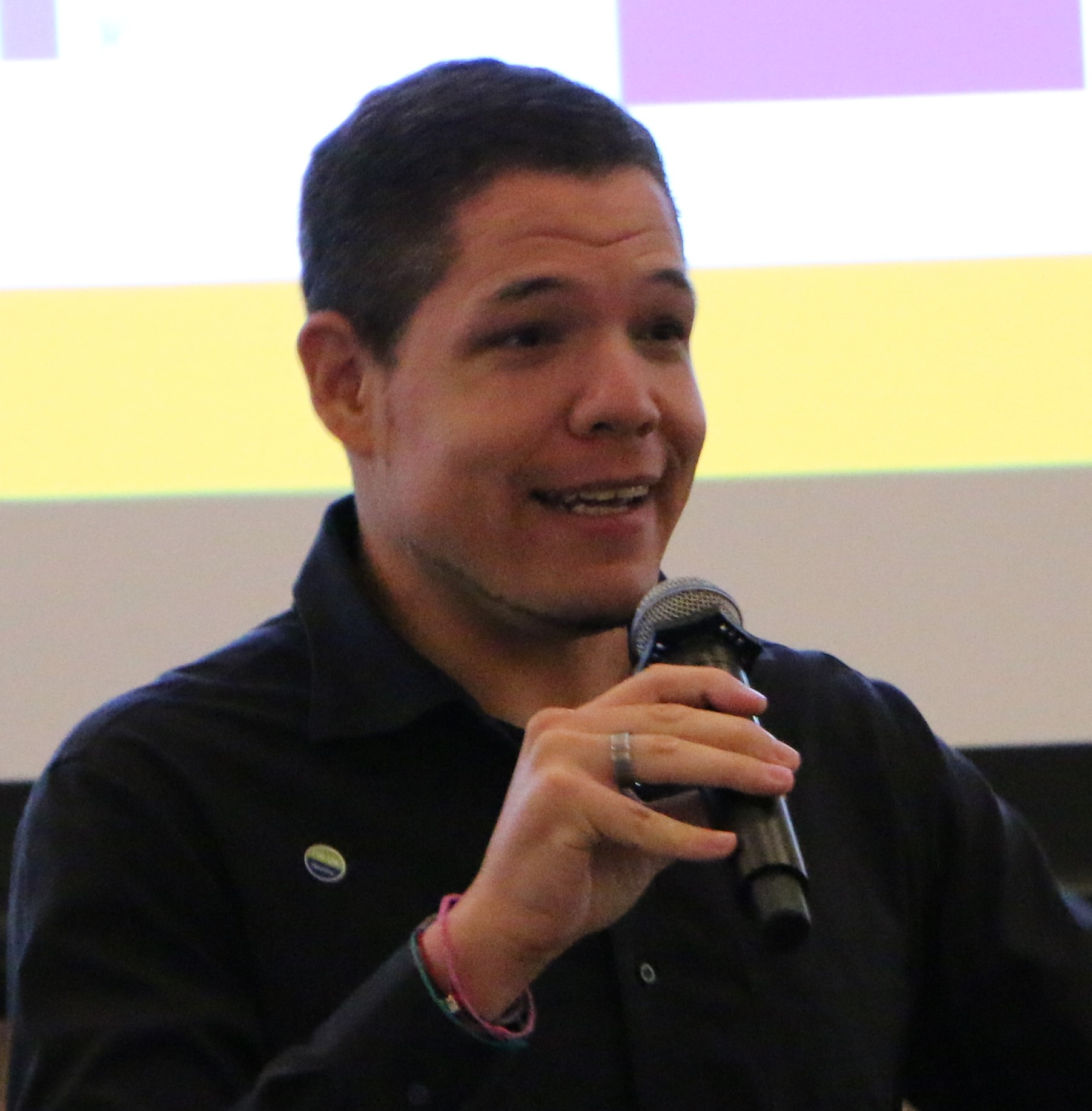
After Lim Chinn Hwa’s presentation, the session welcomed Dr David Hardoon, Senior Advisor for Data and Artificial Intelligence, UnionBank Philippines. He shared how the future of government must be anticipatory, intuitive, while government officials are invisible to the public eye.
David feels that a digital government must be citizen–centric and perceived from an engagement point of view. Citizen experience should be at the heart of a digital government. A digital government must not retrofit programmes and processes to digital, instead, they must make programmes and initiatives that are digital by design.
Beyond citizen centricity, governments must provide safe experiences for their citizens. Digital transformation will be accompanied by cybersecurity across the board, and not just in financial transactions. Governments must learn how to create safe experiences by using data and available technology.
Governments and agencies must learn to be non-visible at times and create seamless experiences for their citizens or customers. Too much visibility, like transferring from one agency to another just to avail of a service, can result in unrest from a citizen’s point of view. Governments must be made aware that users just want to avail the service and avoid the tediousness of varying processes. Expanding on his view that the future of digital governments is invisible, he felt that cutting down on the approvals from various agencies when trying to access a service is the way to go.
Governments must be motivated by the results and outcomes, not by the money they are going to make. Leaders and decision-makers must find the right tools to measure these underlying outcomes. The more agencies use technologies like AI, machine learning and data science, the more it is critical to make a direct link between the effort that has been put in and the outcome that is derived from it.
David ended his presentation by saying that governments must move on from sandbox treatments and trials to the actual production of programmes for their citizens using disruptive technologies such as AI, machine learning, and data science. Building a digital future must be made in a scalable, robust and secure manner.
Power Talk
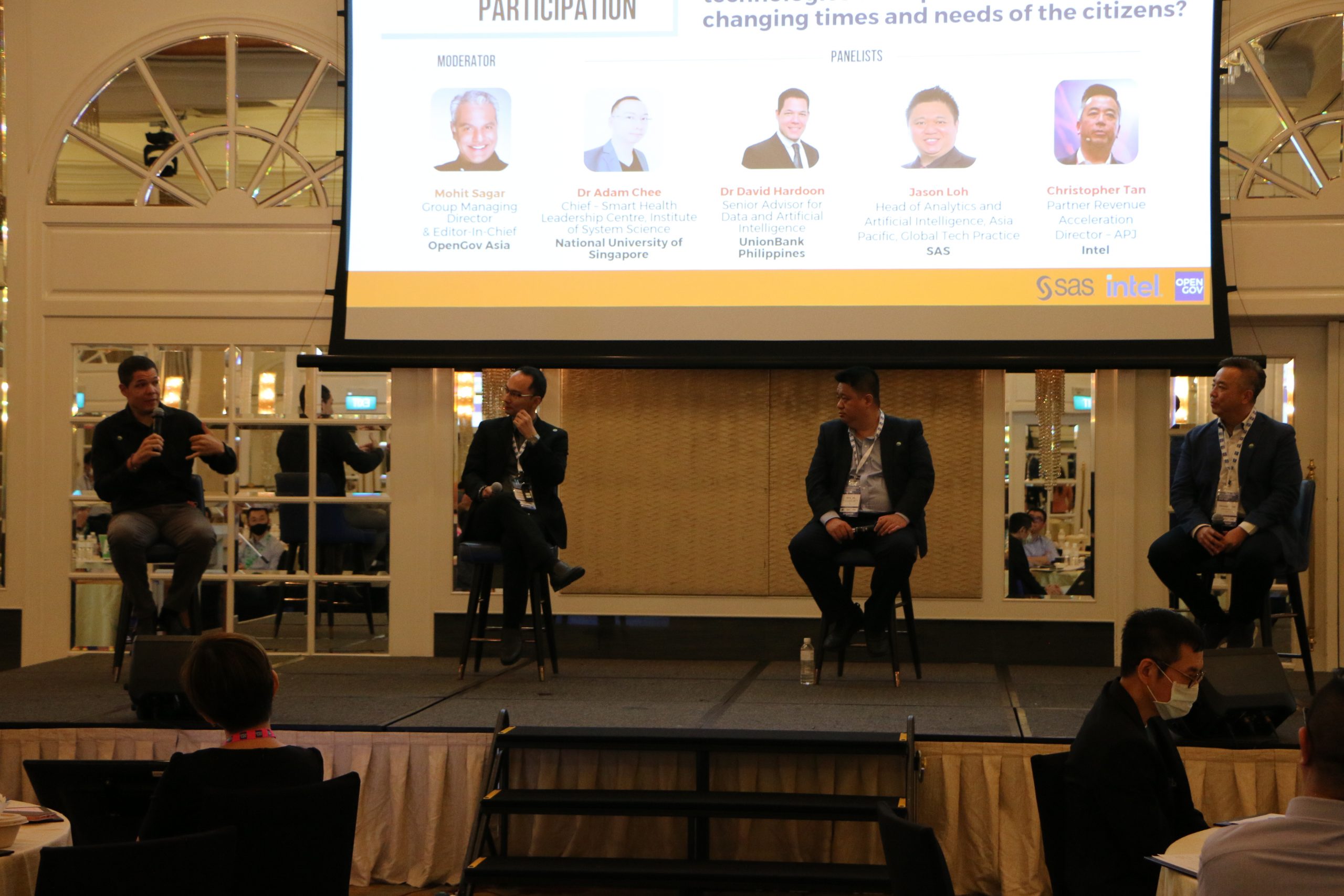
Mohit joined Dr Adam Chee, Chief – Smart Health Leadership Centre, Institute of System Science, National University of Singapore, Dr David Hardoon, Senior Advisor for Data and Artificial Intelligence, UnionBank Philippines, Jason Loh, Head of Analytics and Artificial Intelligence, Asia Pacific, Global Tech Practice SAS, and Christopher Tan, Partner Revenue Acceleration, Director – APJ, Intel in Power Talk to discuss how the public sector can further adapt to the changing times.
Jason Loh believes that the personalisation of services will be more prominent in the new normal. He reiterated that the world should continue to embrace technological advancements and new policies and not return to the old norm.
Dr David Hardoon does not feel transformation is about changing culture; it is about how to incorporate technology within the context of culture.
Christopher Tan argues that leadership and the building of digital infrastructure are critical in the changing times.
Dr Adam Chee emphasised the need for digital training and data and information dissemination within governments and organisations in the new normal.
Conclusion
The OpenGov Public Innovation Day – Singapore Day 1 ended with the closing remarks from Mohit. He strongly felt that the change must come from the top so it can trickle down to the workforce and communities.
Change must start from people who understand technology because these technologies use data and data gives you insights; that is the driver behind everything else. Governments should be an example to everyone and by doing that, the desired outcomes will follow.
For more on OpenGov Asia’s Public Sector Innovation Day – Singapore: “Accelerating Digital Transformation, Resiliency, and Innovation for Public Sector in Post-Pandemic Recovery” read Part 2 here.
















